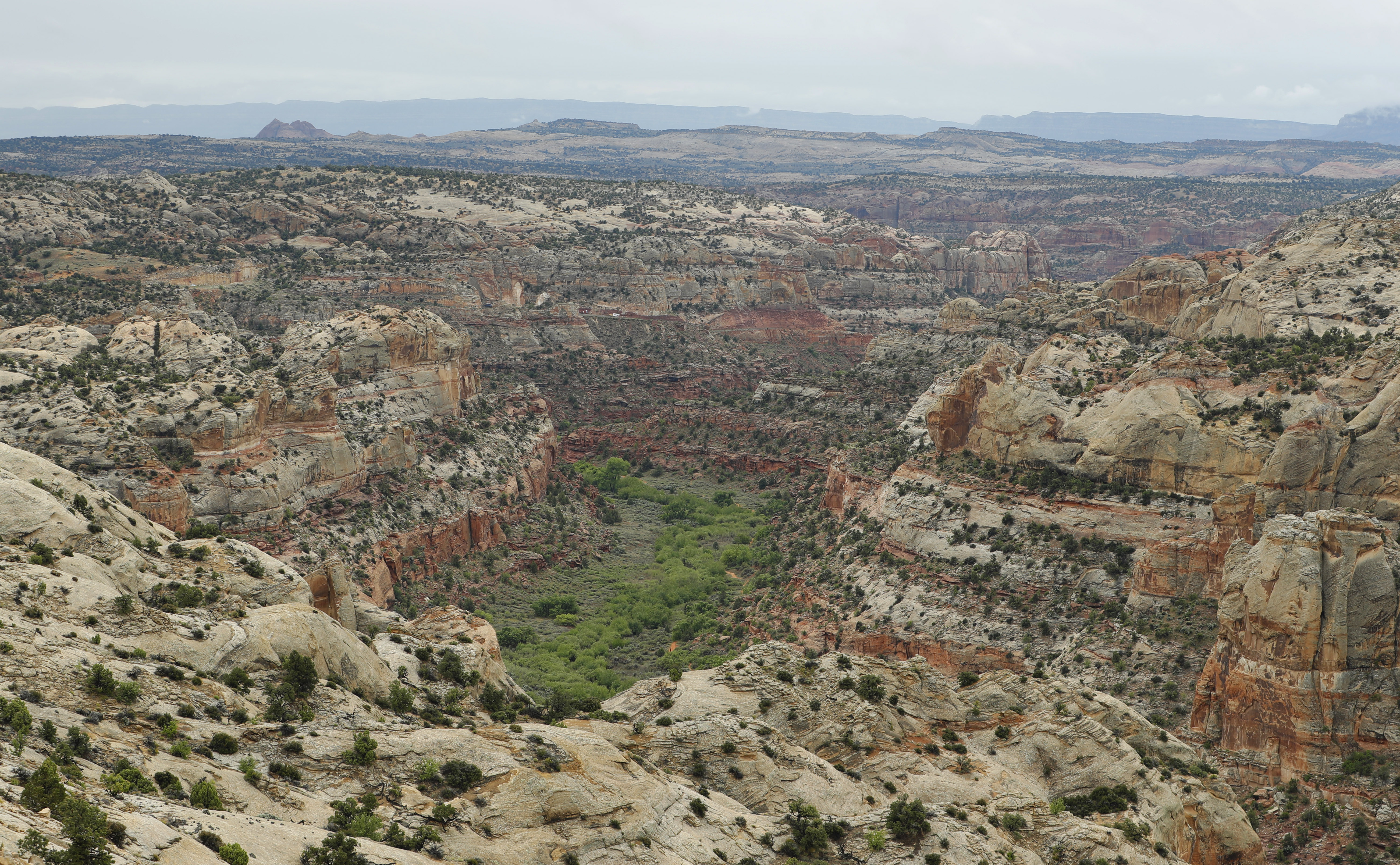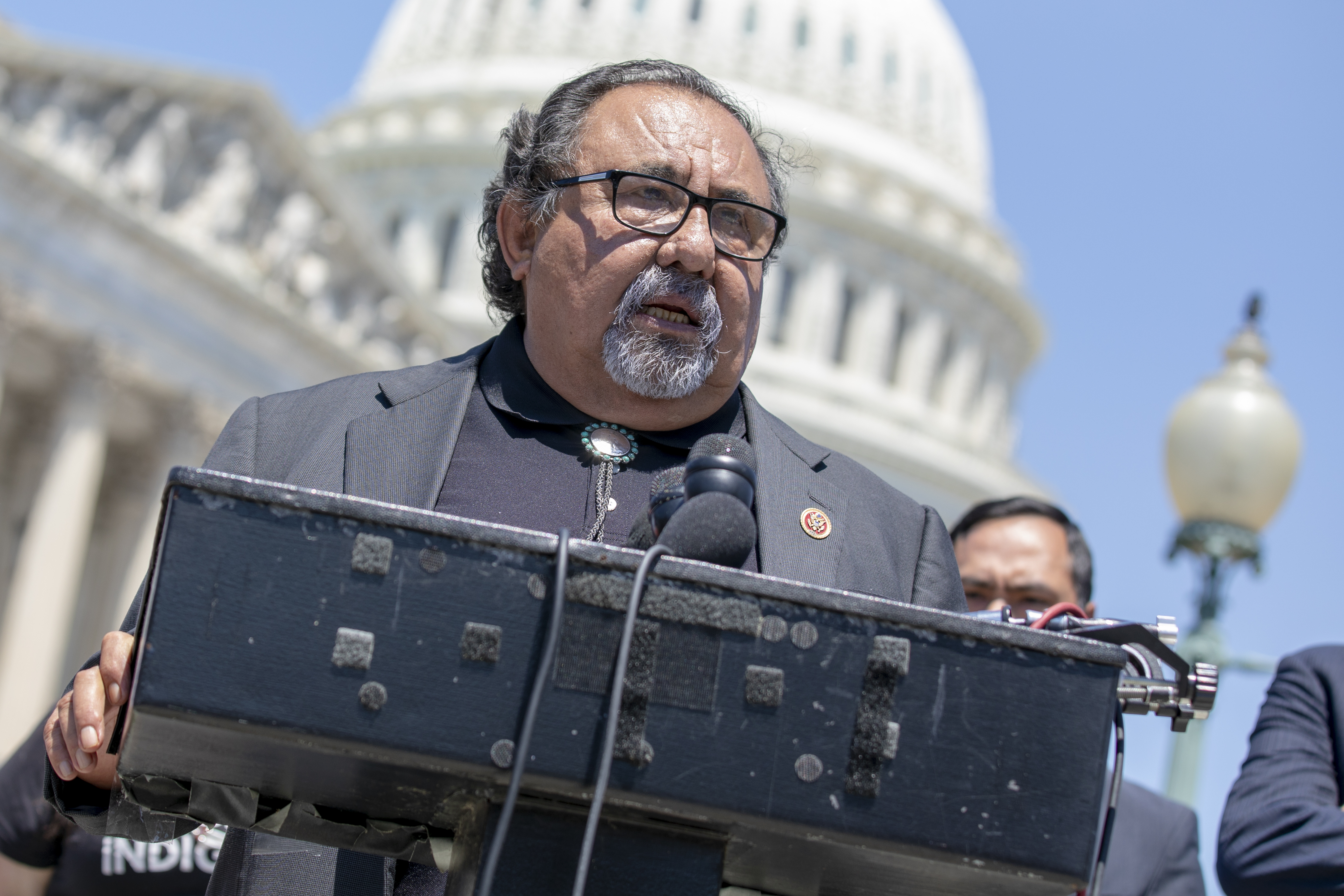
(Photo: George Frey/Getty Images)
For nearly four years, Representative Rob Bishop of Utah, the white-haired foe of environmentalists everywhere, has reigned over the House Committee on Natural Resources. Backed by more than $450,000 in oil and gas industry campaign contributions, Bishop has leveraged his position as the committee’s Republican chairman to hammer away at the bedrock laws and institutions that undergird America’s conservation system. The list of his attacks on public lands and wildlife could go on for pages, but here’s a sampling:
- He has been an unrelenting enemy of the Antiquities Act, denouncing the creation of national monuments across the West while attempting to pass legislation that would effectively gut that century-old law.
- He has gone after the Endangered Species Act, co-sponsoring a slate of bills that would leave the United States’ most important wildlife law all but toothless.
- He has tried to weaken the National Environmental Policy Act, derided the Wilderness Act, and publicly endorsed transferring federal public lands to state control.
- He has harried the environmental organizations that he despises, occasionally sending out official letters that smear as foreign agents groups like the Natural Resources Defense Council and the Center for Biological Diversity.
- He has invited a steady stream of conservative front groups to testify on Capitol Hill in order to promote their anti-conservation policies.
- He has allowed the committee’s social media pages to be used as tools of political warfare, as when its Twitter account denounced the gear company Patagonia for having the temerity to criticize President Donald Trump.
- He has failed to conduct oversight of Ryan Zinke‘s Department of the Interior (DOI), despite the fact that Zinke and the DOI have been the subject of more than a dozen federal investigations.
But, after the Democrats seized control of the House of Representatives in the mid-term elections, Bishop’s tenure now has an expiration date. Come January, the congressman is expected to hand over his gavel to the ranking Democratic member of the committee, Representative Raúl Grijalva of Arizona.
With support from conservation groups and his more environmentally minded colleagues, Grijalva will soon be able to reverse much of the legacy that Bishop leaves behind. Here are five urgent priorities that Grijalva can tackle in the months ahead:
Conducting Real Oversight
During his short time in office, Ryan Zinke’s Department of the Interior has been a den of unseemly industry influence, ethical infractions, and troubling conflicts of interest. After close consultation with conservative ideological groups, for instance, his department drastically reduced the size of Bears Ears National Monument and Grand Staircase-Escalante National Monument, both in southern Utah. And, after scores of meetings and regular communication with oil and gas groups, the DOI rolled back the Obama-era methane rule that sought to regulate potent greenhouse gas emissions on federal land.
Key political appointees in the DOI, meanwhile, have tight ties to organizations and industries with business before the agency. In some cases, these ties have led to clear ethical infractions, as when political appointee Douglas Domenech met with his former employer, the Koch-linked Texas Public Policy Foundation, to discuss two lawsuits the foundation had filed against the department. Then, of course, there are the numerous ongoing federal investigations, including one by the Department of Justice, into Zinke’s personal conduct.
This unfolds as the Department of the Interior continues to drag its feet when responding to Freedom of Information Act requests. Records are being released from the agency at a painfully slow pace, limiting the public’s access to timely information about the activities of Zinke and his leadership team. Bishop, all the while, has done next to nothing to hold Trump’s DOI accountable to the American people.
Grijalva now has an opportunity to use his subpoena power as the new chair of the House Natural Resources Committee to conduct real oversight of the DOI. He can soon scrutinize both Zinke himself as well as key political appointees at the Department, many of whom, while not necessarily in the newspaper headlines, still wield immense power at DOI, and have been involved in many of its most controversial decisions.
Restoring the Monuments
In 2017, after a concerted pressure campaign by Koch-linked conservative groups and right-wing political operatives in the American West, the Trump administration radically shrank the size of Bears Ears National Monument and Grand Staircase-Escalante Monument in southern Utah. The move was arguably the most consequential attack on America’s conservation system in a generation or more.
Upon taking over the House Natural Resources Committee, Grijalva can use his considerable new power to push back against this attack. Among other things, he will soon be able to conduct a thorough investigation of the key players involved in the campaign to roll back the two monuments. He can attempt to force the Trump administration to disclose its legal rationale for the decision. And he can finally push and pass legislation to restore both monuments, and send a message to the American people that anti-conservationist ideologues no longer control Congress.
Ending the Attacks on the Endangered Species Act
Bishop and other anti-conservation politicians in the House and Senate have used a variety of tools in recent years to undermine the Endangered Species Act. One of the most effective of these has been the legislative rider, which lawmakers like to tack onto appropriations and defense bills in order to prevent the U.S. Fish and Wildlife Service, or FWS, from effectively enforcing the Endangered Species Act. For many years now, for instance, Republicans in Congress have slipped riders into appropriations bill that effectively prohibit FWS officials from listing the greater sage grouse under the ESA. Such riders effectively hamstring conservation groups that want federal protection for the sage grouse and other imperiled species. Conservationists should expect Grijalva to do everything in his power to put an end to the use of such riders and block any other legislative attempts to sabotage the country’s most important wildlife law.

(Photo: Alex Edelman/Getty Images)
Repairing the Committee’s Reputation
Bishop’s tenure as chair has badly damaged the House Committee on Natural Resources’ credibility with conservationists, scientists, Native Americans, and many others. Among other things, he and other committee Republicans have collectively taken more than $6 million in campaign contributions from oil and gas interests, undermining the committee’s legitimacy as a protector of the public trust. They have used the committee’s social media accounts to spread conspiracy theories and attack prominent conservation groups, including groups like the League of Conservation Voters and the gear company Patagonia. And they have conducted a string of hyper-partisan hearings that primarily rely on testimony from far-right ideological groups and industry organizations.
Grijalva can begin to restore the committee’s relationship with alienated constituencies by severely restricting its relationship with special interests, by encouraging his members to forgo campaign contributions from powerful industry groups, by bringing balance back to hearings, and by using the committee’s communication platforms in a responsible manner.
Reframing the Debate: A Green New Deal
In this era of sustained political upheaval, Grijalva and his House Committee on Natural Resources have a critical chance to reframe the national debate about public lands—about what they mean, who they serve, and how they are managed. After decades of neoliberal ascendancy in Washington, D.C., national parks and other prized lands are in a very bad way. The National Park System alone suffers from a deferred maintenance backlog of about $11 billion, and the U.S. Forest Service’s deferred maintenance backlog hovers somewhere around $5 billion. Trails, bridges, buildings, roads, and other public lands infrastructure are crumbling. Employment opportunities on the federal domain, especially for young people hoping to start their public service careers in entry-level field jobs, are mostly meager. All the while, federal funding for land management and acquisition programs are in constant peril.
This ceaseless deterioration of the public domain has resulted, inevitably, in a loss of public trust. There are signs everywhere, and especially in the American West, of rising anti-government resentment that threatens the very existence of the federal lands. You can see it in the Bundy family’s armed takeover of the Malheur National Wildlife Refuge. You can see it in the state of Utah’s relentless campaign against Bears Ears National Monument. You can see it in the work of organizations like the American Lands Council, the American Legislative Exchange Council, the Property and Environment Research Center, and other Koch-funded anti-public-land groups.
That said, it’s not too late to take a new and better path when it comes to public lands. At this very moment, a rising generation of politicians and activists are calling on the Democratic Party to embrace a Green New Deal, a bold policy that would use the federal government’s vast resources to rapidly move the country away from its reliance on fossil fuels by remaking and restoring its energy grid, its transportation systems, and its public infrastructure. Federal lands, of course, are part of this mix.
Grijalva and his committee have a powerful platform to help shape this vision—they can, for instance, work to ensure that the Green New Deal, like the original New Deal before it, includes a 21st-century Civilian Conservation Corps, capable of putting hundreds of thousands of young people to work building trails, restoring buildings, and healing damaged habitat on the federal domain.
Such a program would radically alter the role that public lands presently play in American life. No longer would public lands be a deteriorating government institution increasingly vulnerable to political attack. Instead, they could become an engine of economic revitalization and civic engagement, as well as a training ground for hundreds of thousands of budding conservationists.
As chairman, Raúl Grijalva could turn the House Natural Resources Committee into an important champion of the Green New Deal. Coming after Rob Bishop, what a reversal that would be.





